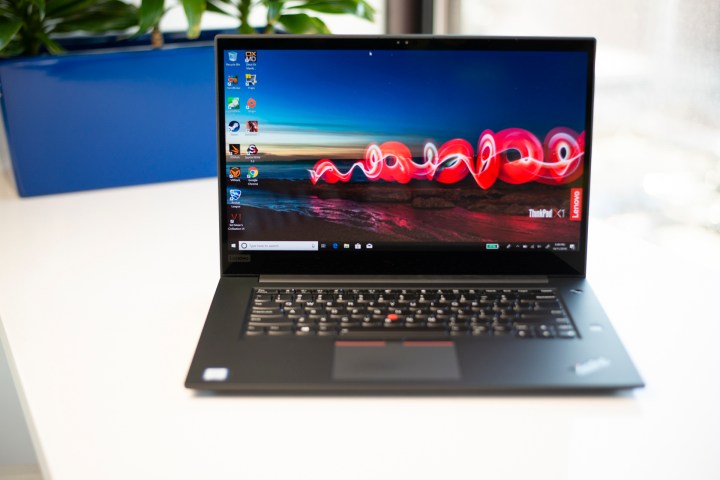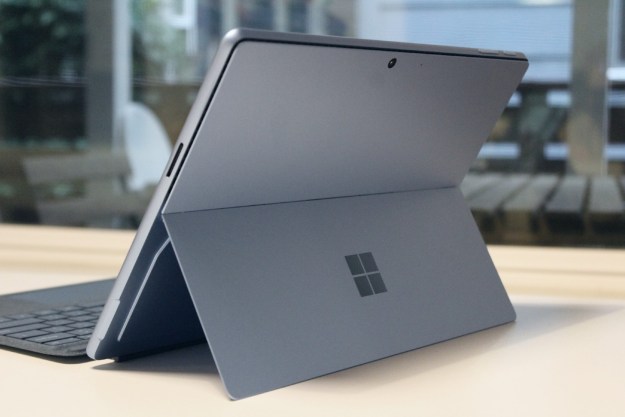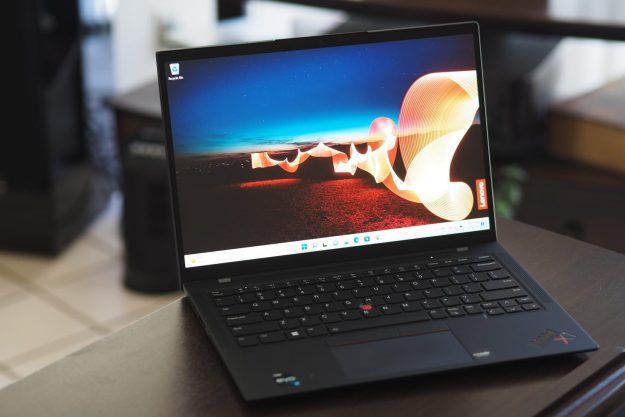The display is arguably the second-most important piece of hardware in a good laptop. After all, it’s the means by which you actually use the device.
Yet displays are difficult to explain and understand. They can be measured, but most people are not familiar with what those measurements mean or how they relate to their own viewing experience. Contrast. Screen resolution. Black level. Gamut. Uniformity. These words can seem like arcane scrawl to the uninitiated, but they’re actually not difficult to grasp.
Here’s our guide to the terms you need to understand when considering a notebook display, along with what to look for in each one.
Screen resolution

You’ve probably heard it before, but screen resolution refers to the number of pixels packed into the vertical and horizontal areas of any given display. Some of the most frequently used screen resolutions include 1,920 x 1080, and even 1,024 x 768. These numbers can get confusing thanks to the different display aspect ratios available. Sometimes these resolutions are listed at FHD, 1440p, 1080p, 4K, or QHD. Each of these terms still refers to the total amount of pixels packed into the screen resolution.
For instance, 1080p packs a standard 1,920 x 1080 resolution, whereas QHD and 4K pack in 2,560 x 1,440 or 3,840 × 2,160, respectively. Our guide to buying displays and monitor resolutions is available, but the short version is, the higher the resolution, the sharper the picture. That is often what you can get in new displays, and what newer terms like 4K or QHD refer to.
Displays — and laptops — with 1080p or FHD resolutions happen to be the most common and cheapest in the market. In more recent times, 4K options have also become available, but are often quite expensive. The Dell XPS 13 is one of the best laptops we recommend. It comes with both 1080p and 4K options, though we’d usually recommend the 1080p option, as it helps save on battery life.
IPS vs. VA vs. TN
You’ll likely see laptop specifications listing one of these three display types. They’re an indicator of the technology powering your display and the benefits they provide.
TN, or twisted nematic, is the oldest of the three and enabled the use of flat LCD displays, pushing bulky, heavy, curved CRT screens out of the picture. This technology is still in use today, offering extremely high refresh rates and response times. The biggest flaw of a TN panel is viewing angle, which begins to lose color as you move your head away from the center. Gaming laptops typically gravitate to this technology due to the benefits previously mentioned.
IPS, or in-plane switching, made its debut on smartphones. Mobile devices needed not only wider viewing angles, but also richer colors and better black levels so screens could be seen outdoors. This technology eventually made its way into standard desktop monitors and laptop displays, enabling better color accuracy when editing various media. Newer IPS panels now push higher TN panel-like refresh rates beyond 200Hz along with extremely low response times.
VA, or vertical alignment, serves as a compromise between IPS and TN technology. It offers the best contrast ratio of the three and better colors than TN panels, but its response time can be slower than both TN and IPS displays. Viewing angles are closer to IPS but not quite as wide. You’ll mostly see this technology used in TVs, though it can also be applied to laptop displays to keep the overall cost down.
Ultimately, you’ll want to decide what you want from a laptop display. If you’re a professional who’s editing photos, a laptop with an IPS display would be ideal. If you’re gaming on the go, a TN or VA panel may be more appropriate.
Contrast ratio – Not really 1,000,000,000:1

This phrase is one that you’ve almost certainly heard before. Display manufacturers love to use contrast ratios because of all the impressive zeros they get to slide in. Numbers are easy to understand, and the higher they are, the better their display seems on paper.
Contrast ratio is simply the ratio of luminance between the brightest color (white) and the darkest (black) on a display. Higher ratios are considered better because it means images will appear more defined and realistic. There’s just one small problem: No one uses a standardized test for contrast ratios. There are many ways to fudge the results, which is why there are inexpensive displays that claim insane ratios like 10,000:1.
When reviewing display specifications, you may see two different types of aspect ratios to confuse you even more: Native (or static) and dynamic. A native contrast ratio is the widest distance between dark and light a display can project at a given brightness setting. A dynamic contrast ratio is the widest distance between dark and light a display can project over a period of time. This latter contrast ratio type usually has insane numbers manufacturers love to promote, like 1,000,000,000:1.
You should trust contrast ratios as they’re reported in reviews. In-depth analysis using identical testing methods and equipment is the only way to discover a display’s true contrast.
Nit picking
Brightness is important for mobile devices like laptops, smartphones, and tablets. Most devices have a glossy display to enhance contrast, but the gloss makes reflections an issue in bright rooms or outdoors. These reflections can only be defeated by a bright display.
The nit is the standard unit of luminance used to describe various sources of light. A higher rating means a brighter display. Displays for laptops and mobile devices are usually between 200 and 300 nits on average. A rating over 300 nits is solid and a rating above 500 nits is extremely good. Only a few devices can put out that much light, though as HDR and OLED laptops become more common, that’s changing.
Apple’s MacBooks are known for having the brightest screens on a laptop. Its 13-inch MacBook Pro we reviewed had a screen that maxed out at 548 nits. Televisions are a different story, and the brightest go north of 1,000 nits.
Seeing in black and white

Reviews of displays, including ours, will often make reference to black levels. You might be able to infer that this has something to do with how the display renders black, but it doesn’t explain much else.
Black level itself is expressed in a number, with lower being better. A black level of 0 represents a dark, pure black. The number is relevant because it has an influence on how a display handles dark images. If you ever watch a movie on a bad display you will notice that details are missing from dark scenes. That’s because the display isn’t capable of reproducing the darkest portions of the image.
White levels are the opposite. The higher the value, the better. A white level of 255 is the maximum on the RGB scale, so an ideal display will come close to that figure and display a bright, unblemished white. Modern displays have a better handle on white levels than they do black levels, so it usually is not a defining quality. But an exceptionally good or bad result can make a difference.
A journey through space

Microsoft and HP collaborated in 1996 to create a standard color space known as sRGB. As you might imagine, it’s most relevant to computers. A color space is a standard gamut of colors that displays should be capable of reproducing.
These days, most laptops you purchase can handle most of the sRGB color space. Even most midrange IPS displays can handle around 90% or better. That’s why by today’s standards, we often test color gamut using the AdobeRGB color space. Although it is less important than sRGB, only the highest-quality laptop panels handle over three-quarters of this color space.
Only professional, high-end laptops like the MacBook Pro, ThinkPad X1 Extreme, and Dell XPS 15 reach the high 90s of both sRGB and AdobeRGB.
Respect the uniform
Almost all displays on the market today use LCD technology. This technology has been refined so that it’s inexpensive and of high quality, but does have a few drawbacks. Among these is the fact the panel itself emits no light.
For a picture to be visible, a light must be shown through the LCD. In an ideal world, the light behind the LCD would be equally bright in all areas, but that’s easier said than done. Most displays are at least a bit brighter in some areas than in others. This is a uniformity issue.
We have tested displays with uniformity issues that were severe enough to be immediately noticeable by an untrained eye. The problem is most obvious during dark scenes and is most prevalent in mobile devices. Plasma and OLED don’t have this problem because they create their own luminance.
Getting the band together
We commonly use a banding test image when looking at a display. This image displays a gradient of shades between absolute black and absolute white. A perfect product will display the image as butter smooth, but most don’t. Bands often appear in the image and are most common in its darkest quarter.
Banding is a noticeable problem. It’s common in any content that depicts a grade of color that gradually shifts. A photograph of a sunset is a great example. Banding will cause the photograph to have unnatural layers of color that shift abruptly.
HDR

HDR is a relatively new term in the laptop and display market. Better known as high dynamic range, it is slowly becoming a term to look for when shopping for new displays or laptops. It is not at all complicated and is just a technology which allows for a high level of contrast between light and dark images on a screen, and for a better color depth in images.
Some Windows 10 laptops now come with HDR displays, but it doesn’t make for much difference for the interface and visuals across the operating system. Instead, HDR is what can make movies and games bright, vibrant, and fun to watch or play. Keep in mind that only a few programs currently support HDR, and you might need to manually enable it in Windows Settings to get started. A laptop like the 3rd generation ThinkPad X1 Yoga is one of the best for enjoying HDR content.
Refresh rate

Measured in hertz, the refresh rate is a term that explains how often a display can change the picture in a second. Common refresh rates include 60Hz, 120Hz, and 144Hz, but these have nothing to do with color accuracy or resolution. Still, for gaming, refresh rates are especially important.
Playing games at a native refresh rate on a monitor or laptop is best since it can avoid screen tearing, where the video card is pushing out more frames than a display can handle. Older games and Esports titles can easily be pushed over 60Hz, and there can be a real benefit to playing on a monitor that can leverage all those extra frames. Most of our favorite gaming laptops enjoy high-refresh-rate screens.
A higher refresh rate can also make mouse movements and other aspects of Windows usage smoother, which isn’t life-changing but can add to the enjoyment of using your PC. It’s still predominantly beneficial for gamers, though.
The screen door effect

“Screen door effect” is a phrase used to describe a monitor that has a visible gap between individual pixels. The technical term for this phenomenon is “dot pitch,” which describes the size of individual pixels and the distance between them. A low dot pitch means gaps should not be easily visible, while a high dot pitch means the opposite.
The impact of dot pitch is relative to the device. The gap between pixels becomes easier to notice as the distance between the display and the viewer decreases. That is why dot pitch is most often a problem on a mobile device or VR headset. Monitors and HDTVs usually don’t struggle with this problem because the user is much further away.
Editors' Recommendations
- Best HP laptop deals: Get a 17-inch workhorse for $370 and more
- The best MacBook to buy in 2024
- M4 chip: here’s everything we know about Apple’s latest silicon
- The best tablets in 2024: top 11 tablets you can buy now
- The best laptop brands for 2024


